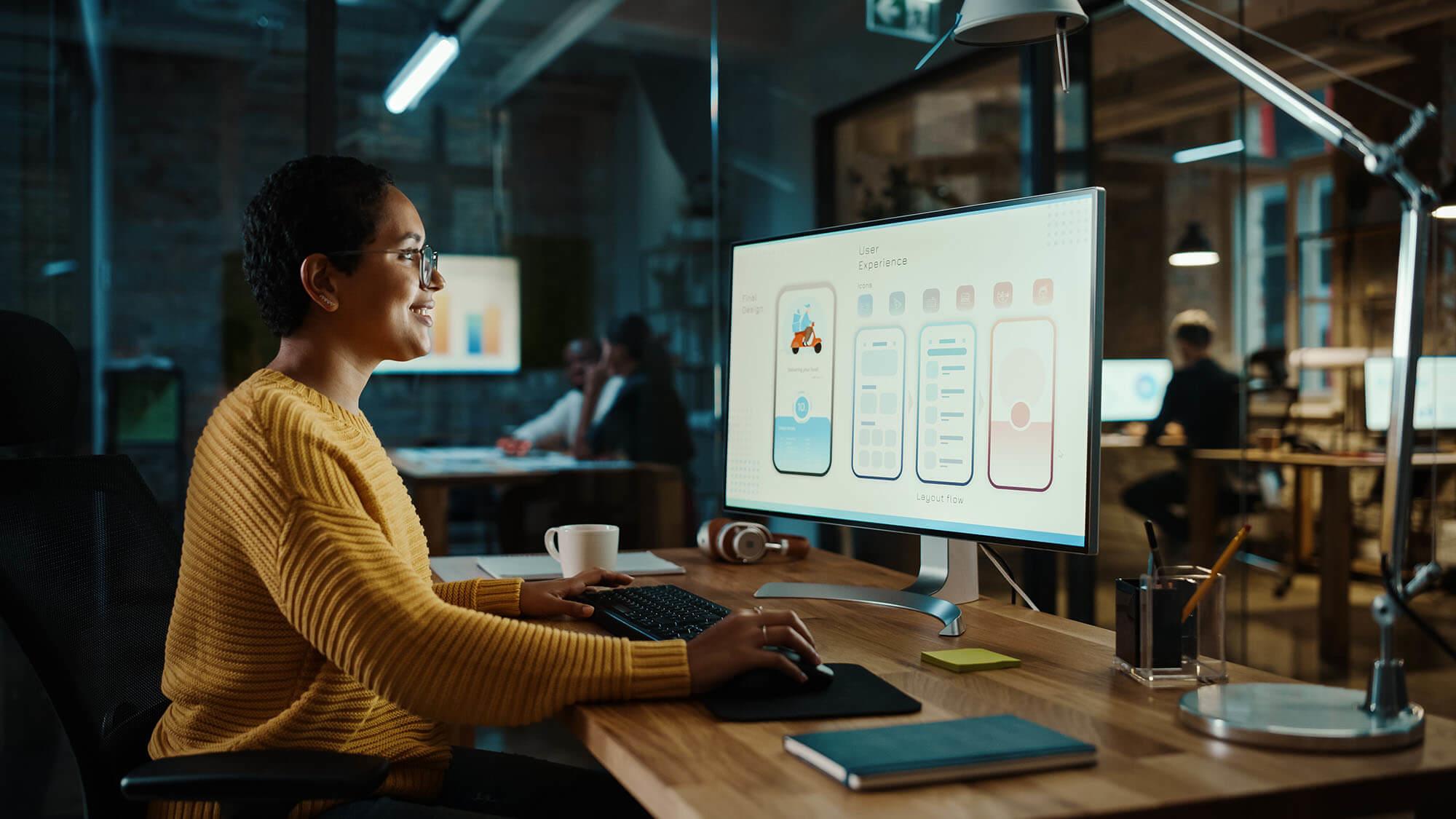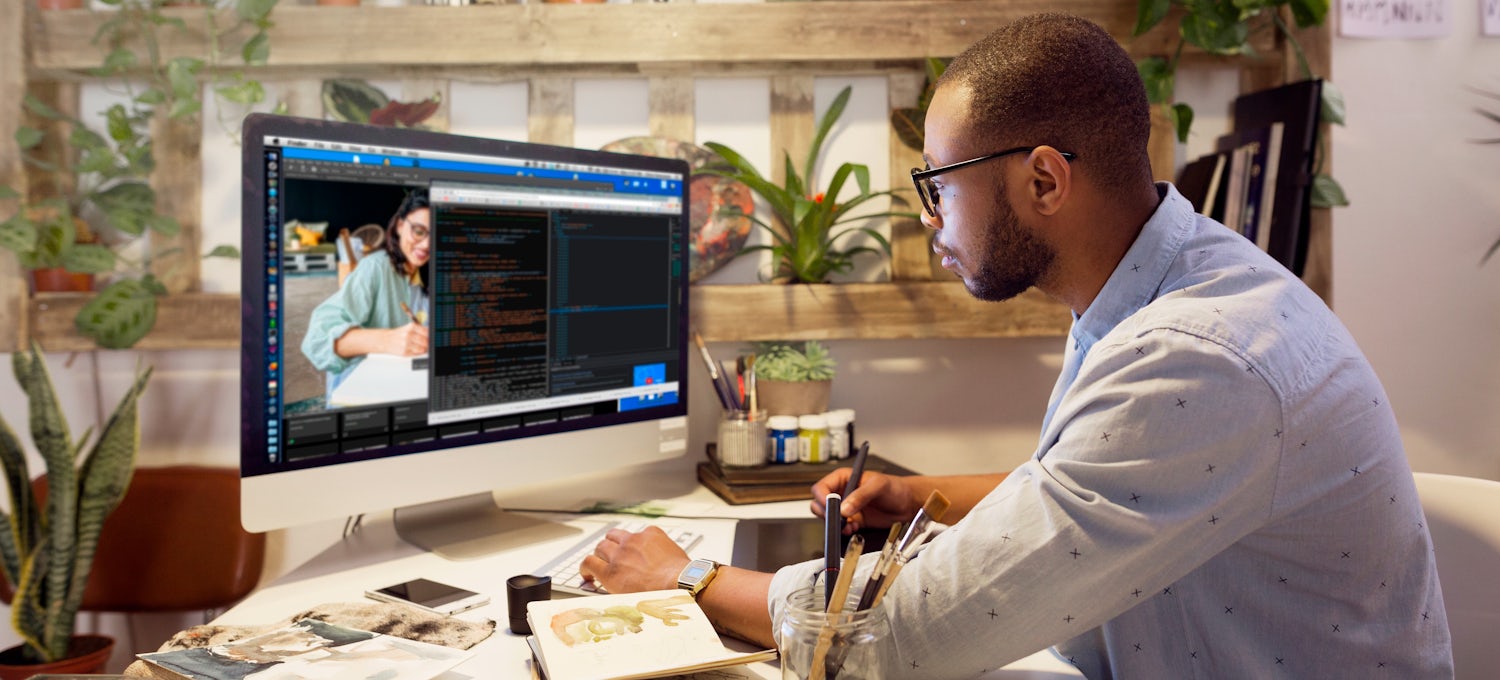Checking Out the Basic Concepts and Ideal Practices of Effective Website Design for Enhanced User Experience and Engagement

Value of User-Centered Style
User-centered design (UCD) functions as a keystone of effective website design, stressing the need of tailoring electronic experiences to satisfy the requirements and choices of individuals. By prioritizing the customer's perspective, UCD guarantees that internet sites are not only useful yet appealing and additionally instinctive.
The relevance of UCD hinges on its capability to enhance customer contentment and retention. When customers find a website very easy to navigate and aligned with their assumptions, they are most likely to return and advise it to others. This method cultivates a deeper psychological connection, making it possible for brands to construct count on and commitment among their target market.
Moreover, UCD assists in the identification of individual discomfort points via research study and screening, enabling developers to address these problems proactively. By entailing individuals in the layout process, whether with meetings, studies, or usability screening, developers gain useful insights that inform much better decision-making.
Inevitably, the implementation of UCD not just boosts the total user experience however additionally drives quantifiable business results. Internet sites that welcome user-centered methodologies have a tendency to see higher conversion rates and boosted performance metrics, underscoring the crucial function of UCD in modern-day website design.
Trick Design Principles
Effective website design is grounded in crucial style concepts that boost use and visual appeal, additional building on the foundation established by user-centered design. These principles include consistency, aesthetic hierarchy, and responses, which together create an intuitive user experience.
This experience helps individuals navigate and comprehend the interface with ease, strengthening brand name identity. Aesthetic pecking order, attained through color, dimension, and placement, overviews users' focus to the most essential web content, making information much more accessible and appealing.

Incorporating these vital style principles cultivates an unified blend of functionality and aesthetics, inevitably bring about enhanced user satisfaction and involvement. By adhering to these fundamental ideas, designers can develop sites that not only look attractive but additionally supply a efficient and enjoyable individual experience.
Finest Practices for Use
Usability is a cornerstone of effective website design, incorporating a variety of techniques that improve the total experience for individuals. To site web attain optimal use, it is vital to prioritize user-friendly navigating. Logical paths and clear food selections allow individuals to locate information swiftly, reducing stress and enhancing contentment.
Additionally, utilizing regular design aspects, such as color design and typography, fosters experience and reduces navigation. Individuals must not need to relearn how to engage with various areas of the site. Additionally, ensuring that your site is receptive throughout numerous devices is important, as an enhancing number of individuals accessibility content on smart phones.
Another ideal technique entails including accessibility features, such as alt message for photos and key-board navigating choices, to fit users with diverse demands. Examining use with individual comments is vital, as real-world understandings can expose unexpected issues and locations for renovation.
Enhancing Aesthetic Pecking Order
A well-defined aesthetic pecking order is important for directing users through a site, enabling them to quickly recognize the relevance of different elements on a web page. This can be accomplished through the strategic use size, comparison, spacing, and color (web design Johannesburg). Bigger elements normally draw attention first, making headlines or essential telephone calls to action more famous
Color can additionally play a significant function in developing power structure; as an example, using a bold shade for buttons can help them stand apart against a more low-key background. In addition, comparison in between message and history is crucial for readability, ensuring that users can conveniently navigate material without pressure.
Whitespace, or unfavorable room, is another Homepage vital facet of aesthetic pecking order. It gives breathing space around components, assisting to team related items and assisting the individual's eye from one area to one more. By effectively using these design concepts, web designers can produce a smooth customer experience that improves involvement and minimizes cognitive load.
Inevitably, a thoughtfully built visual power structure not only enhances use however likewise promotes a much more user-friendly communication with the site, leading to higher satisfaction and retention rates amongst individuals.
Adaptive and receptive Design
Aesthetic power structure plays a substantial role in individual experience, and its efficiency must expand across various gadgets and screen dimensions. Receptive style utilizes liquid grids, adaptable pictures, and media inquiries to readjust the design and material dynamically, making sure that users delight in a smooth experience blog no matter of the gadget.
In contrast, flexible style uses distinctive layouts customized to certain display dimensions. By finding the customer's tool and serving an enhanced design, flexible layout can supply a much more personalized experience. This commonly calls for multiple versions of the very same content, which can complicate monitoring and rise development time.
Both methods have their qualities, and the option in between them depends upon project demands, target audience, and source accessibility. Inevitably, the objective is to develop an interesting, user-friendly user interface that preserves visual pecking order and usability across all systems. A well-implemented receptive or flexible design not only boosts customer experience yet also urges higher interaction and retention rates, crucial for the success of any type of internet job.
Conclusion
By focusing on functionality with instinctive navigation, aesthetic hierarchy, and receptive formats, designers can produce platforms that cater to varied customer requirements. Emphasizing individual comments and aesthetic factors to consider eventually promotes fulfillment, retention, and boosted efficiency in the digital landscape.
In the quickly developing electronic landscape, recognizing the essential concepts and ideal practices of efficient internet layout is extremely important for cultivating boosted customer experience and interaction - web design Johannesburg.Use is a cornerstone of effective internet style, incorporating a variety of practices that improve the general experience for users. By effectively employing these layout principles, web designers can produce a seamless individual experience that enhances interaction and decreases cognitive tons
Responsive design uses fluid grids, versatile pictures, and media queries to change the format and web content dynamically, ensuring that customers appreciate a smooth experience no matter of the tool. A well-implemented receptive or adaptive design not only improves customer experience however likewise urges higher involvement and retention rates, essential for the success of any web job.